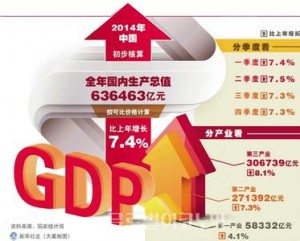China’s economic growth slows to lowest level in 24 years. There have been mixed interpretations regarding whether the downturn of world’s second-largest economy is a passing phase of structural reform or an indicator of the beginning of economic recession.
 Chinese Prime Minister Li Keqiang mentions about the recent recession that China’s economy is entering a “new normal” of slower but healthier growth. The structural reform is focused on dispelling social unrest. For instance, Chinese government chooses creation of jobs through structural transformation from manufacturing industry to service industry even if expanding public investment would make economic growth return to double-digit percentage growth. Similarly, Jack Ma, executive chairman of Chinese e-commerce giant Alibaba Group Holding points out that China should not be worry over slow economic growth but should concentrate on transforming into sustainable economy.
Chinese Prime Minister Li Keqiang mentions about the recent recession that China’s economy is entering a “new normal” of slower but healthier growth. The structural reform is focused on dispelling social unrest. For instance, Chinese government chooses creation of jobs through structural transformation from manufacturing industry to service industry even if expanding public investment would make economic growth return to double-digit percentage growth. Similarly, Jack Ma, executive chairman of Chinese e-commerce giant Alibaba Group Holding points out that China should not be worry over slow economic growth but should concentrate on transforming into sustainable economy.
Even though there are notable changes in economic structural change, it is true that China should acknowledge its loss of global competitiveness in export business, which is followed by rising labor costs. Along with the failure of real estate business plan planned by local government due to the low demand in the market, China’s economic stability is at risk.
It might be too soon to foresee the end or the longevity of the economic slowdown but it is clearly an economic conundrum for China.
Source: The Wall Street Journal “Chinese Officials Shrug Off Concerns Over Economic Slowdown” By Li Yuan, Jan. 24, 2015.
The last slowdown was 1989, one of the triggers for the Tiananmen movement and its subsequent recession. Slowdown makes the leadership nervous. However, China is awash with “white elephant” projects, the national expressway system is largely complete, and so on. So increasing public works poses challenges, and feeds into a culture of corruption at the local government level.